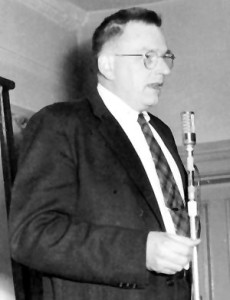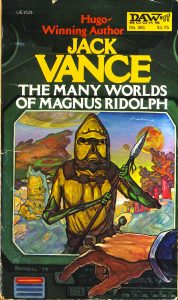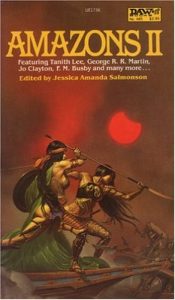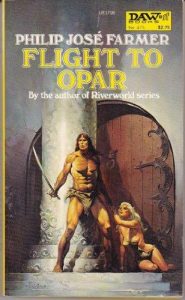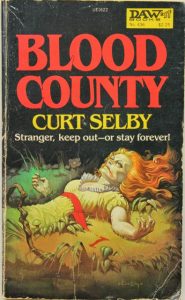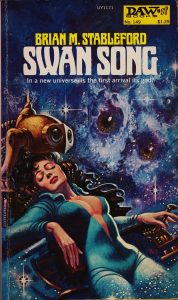Today, October 15, marks the birthdays of two writers of adventure oriented science fiction.
 The first is James H. Schmitz (1911-1981). Most, but not all, of Schmitz’s work is set in the Hub. There are several recurring characters, including Telzey Amberdon, a telepathic young woman, and Trigger Argee, a special agent. Both of these ladies appeared in solo stories as well as shared adventures. These stories are a lot of fun. There are also a number of stand alone stories set in the Hub that don’t have recurring characters. Baen reprinted all (or almost all, there may have been one or two stories they couldn’t get the rights to) about 17 or 18 years ago. Outside the Hub, Schmitz’s best known works are The Witches of Karres and the Agent of Vega stories.
The first is James H. Schmitz (1911-1981). Most, but not all, of Schmitz’s work is set in the Hub. There are several recurring characters, including Telzey Amberdon, a telepathic young woman, and Trigger Argee, a special agent. Both of these ladies appeared in solo stories as well as shared adventures. These stories are a lot of fun. There are also a number of stand alone stories set in the Hub that don’t have recurring characters. Baen reprinted all (or almost all, there may have been one or two stories they couldn’t get the rights to) about 17 or 18 years ago. Outside the Hub, Schmitz’s best known works are The Witches of Karres and the Agent of Vega stories.
 One of Schmitz’s strengths are his ecosystems and his monsters. They are some of the most intriguing I’ve seen in science fiction. It’s been a number of years since I read Schmitz, but his work was always fun. I need to revisit them when I get a minute (which won’t be before the semester is over). The threats were serious, but his stories weren’t bleak or nihilistic like so much contemporary fiction is. One thing that stood out was many of Schmitz’s protagonists had families, and this dynamic added to the depth of the characters and world-building. His heroes and heroines weren’t all loners. They would be suitable to give to younger readers, as they don’t have any graphic sex or violence.
One of Schmitz’s strengths are his ecosystems and his monsters. They are some of the most intriguing I’ve seen in science fiction. It’s been a number of years since I read Schmitz, but his work was always fun. I need to revisit them when I get a minute (which won’t be before the semester is over). The threats were serious, but his stories weren’t bleak or nihilistic like so much contemporary fiction is. One thing that stood out was many of Schmitz’s protagonists had families, and this dynamic added to the depth of the characters and world-building. His heroes and heroines weren’t all loners. They would be suitable to give to younger readers, as they don’t have any graphic sex or violence.
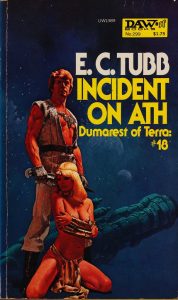 The other person born today that I want to recognize is E. C. Tubb (1919-2010). Although he wrote other characters and series, he’s best known for the Dumarest of Terra series, which ran to over thirty volumes. The premise is Earl Dumarest is seeking the planet of his birth, a mythical place called Earth. Each book involves him finding a bit more information. There’s also a secretive organization trying to stop him. I’ve only read the first one, and that was longer than I want to admit in public. I enjoyed it and have always intended to read more. I’m not sure how some of the later books hold up. I’ve heard various opinions on whether the series went too long. I’m hoping to reread the first and work some of the others into the queue over the next year.
The other person born today that I want to recognize is E. C. Tubb (1919-2010). Although he wrote other characters and series, he’s best known for the Dumarest of Terra series, which ran to over thirty volumes. The premise is Earl Dumarest is seeking the planet of his birth, a mythical place called Earth. Each book involves him finding a bit more information. There’s also a secretive organization trying to stop him. I’ve only read the first one, and that was longer than I want to admit in public. I enjoyed it and have always intended to read more. I’m not sure how some of the later books hold up. I’ve heard various opinions on whether the series went too long. I’m hoping to reread the first and work some of the others into the queue over the next year.



